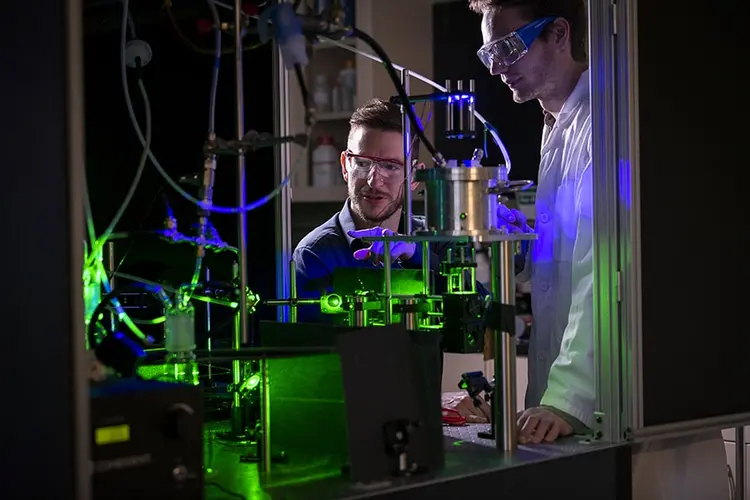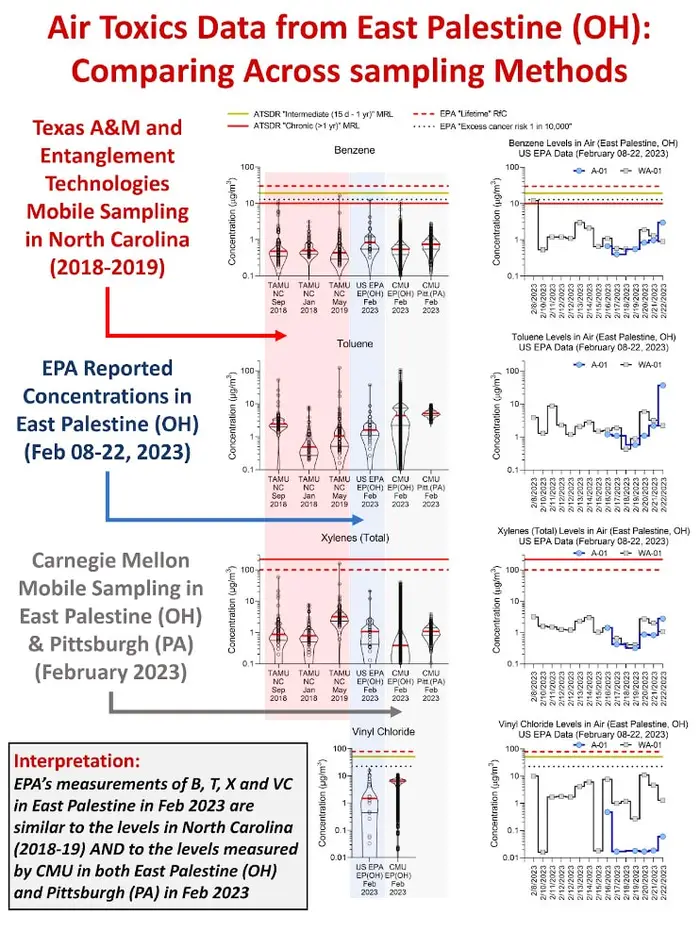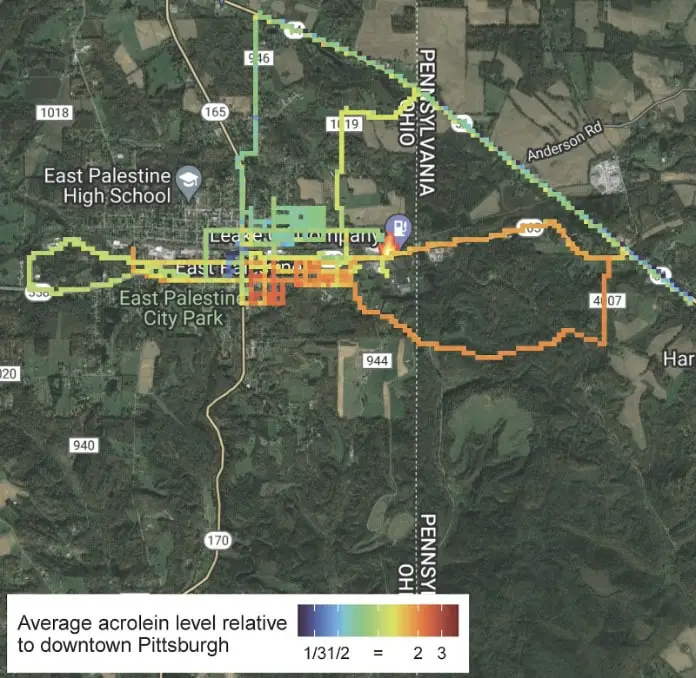
New Air Quality Data from East Palestine, Ohio
Data provided by researchers at CMU and Texas A&M
Media Inquiries
On Feb. 20 and 21, researchers from Carnegie Mellon University and Texas A&M University monitored air pollution in East Palestine, Ohio using Carnegie Mellon's Center for Atmospheric Particle Studies(opens in new window)' Mobile Air Quality Lab.
For the past decade, the mobile lab has been used to measure air quality in cities across the country. The instruments in the lab are sensitive at the parts per billion level. This enables them to identify very small pollutant concentrations that may otherwise be untraceable. It houses several high-time-resolution and chemically specific pieces of equipment to identify air pollutants and emission sources in real time.
During their time in East Palestine, the teams found that all values of benzene, toluene, xylenes, and vinyl chloride were below the minimal risk levels for intermediate (15 days to one year) exposures as set by the Agency for Toxic Substances and Disease Registry. There were no "hot spots" detected by mobile sampling. This analysis corroborates the data collected by the Environmental Protection Agency (EPA) between Feb. 8 and Feb. 22 as shown in Figure 1 (at right).
Acrolein levels, however, ranged from five times lower to three times higher in East Palestine on Feb. 20 than those in Downtown Pittsburgh, whose concentrations are typical of other cities across the country. The team used previously collected air quality concentrations in Pittsburgh as a standard sample for comparison. This analysis confirms potential long-term health concerns previously noted by the EPA's acrolein air data. Several of the EPA samples were above the intermediate levels. The map in Figure 2�(below) shows the strong geographic acrolein variation within the East Palestine community.
"Our mobile sampling results show that for many of these pollutants, the concentrations are within typical ranges. Acrolein remains a chemical of potential concern," said Albert Presto(opens in new window), a research professor in the Department of Mechanical Engineering(opens in new window) at CMU, and member of the Center for Atmospheric Particle Studies.
The mobile sampling was led by Presto in collaboration with Weihsueh Chiu, Ivan Rusyn, and Natalie Johnson of Texas A&M University.
In the News
"We don't know necessarily what the long-term risk is or how long that concentration that causes that risk will persist," said Albert Presto, @CMU_Mech Professor, to CNN regarding the high levels of chemicals near the Ohio train derailment site.https://t.co/OyYKr3gllB
— CMU College of Engineering (@CMUEngineering) March 1, 2023
— Related Content —

CMU's Smell PGH Air Pollution Reporting App Goes National



